After a year of polishing, Meizu 16s Pro was released.

Like Meizu 16s, the updated Meizu 16s Pro is still on the line of “not in the public”. In the flagship of the Alien Screen, Meizu’s complete and standard 18.6:9 full screen has become the highlight of the 16s Pro.
After replacing the Qualcomm Snapdragon 855 Plus and the rear three shots, the Meizu 16s Pro also has the ability to compete with the flagship mobile phone in the second half of the year. The update of various core technologies also refines the overall experience of mobile phones.
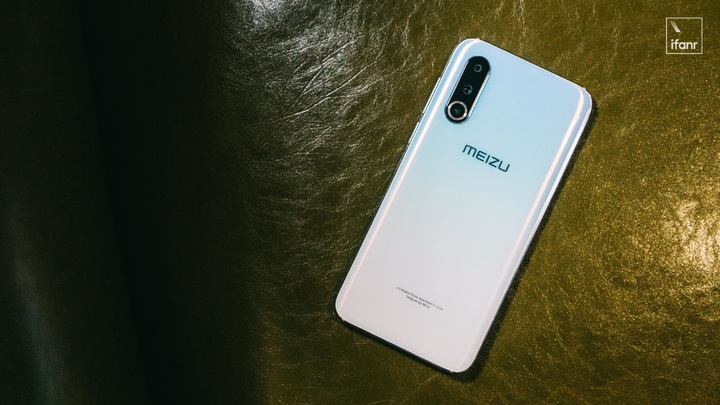
But when these elements are integrated and gathered in Meizu 16s Pro, you will find:
Meizu, still has not changed.
Appearance, continue to be inconsistency
Compared with Meizu 16s, the packaging of Meizu 16s Pro has not changed much.

The new packaging is still dominated by black. The “16s” logo is placed at the center of the front. There is also a beam of aurora at the bottom of the logo, which means that the new machine also adds aurora effect to the back of the machine.

Meizu 16s Pro’s accessories are also very simple, except for the mainframe, only the most basic 24W charging head and card pin, as well as USB-C charging cable and some paper files. This accessory is similar to the Meizu 16s, and this Meizu 16s Pro does not come with a mobile phone case.
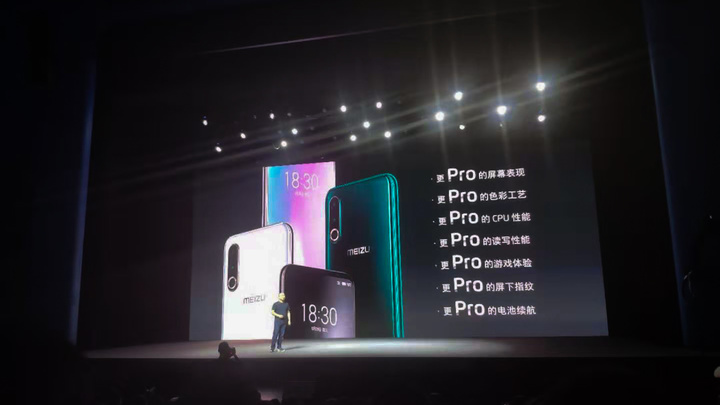
Mobile color matching, Meizu 16s Pro this time launched the “Twilight Forest”, “Dream Unicorn”, “Black Mirror” and “White Story” four colors. In the hands of this “Dream Unicorn” color matching Meizu 16s Pro, with aurora-like light effect on the back of the machine.
The back of the Meizu 16s Pro is still very clean. The rear three cameras are arranged vertically in the upper left of the back of the machine. The Meizu’s iconic ring flash is also placed directly into the rear camera module.

The front of the fuselage still maintains the original design style of Meizu 16s. Meizu has not used the popular shaped screen on the Meizu 16s Pro this time. Instead, it chooses to compress the border and the space of the chin as much as possible to increase the screen ratio. .
Meizu put a 20-megapixel front-facing camera with an aperture of F2.2 on the forehead of Meizu 16s Pro. The camera also comes with a Meizu classic message light.

In terms of appearance, the Meizu 16s Pro uses the standard 6.2-inch 18.6:9 full screen, the camera and the traditional message light also retain the top of the fuselage, the power button and volume button are also placed on the right side of the machine. Compared with other mobile phones, the Meizu 16s Pro still shows the most traditional aspect in appearance. This persistence of tradition has been put into use today, and it is also a kind of design that is not in the public.
Of course, Meizu 16s Pro has a place to “constrain”. Like the previous Meizu 16s, the Meizu 16s Pro also eliminated the 3.5mm headphone jack.
After all, the Meizu 16s Pro is not a machine that pursues the ultimate thickness. It is not difficult to put a 3.5mm interface on the frame. faceMeizu, a manufacturer with acoustic accumulation, I personally hope that they can stick to the 3.5mm interface.

The appearance of the phone has not changed much, and the excellent touch of the previous generation has been continued.
Meizu 16s Pro The whole machine weighs 166g. For a flagship with a 3600mAh battery and a 6.2-inch screen, this weight performance is actually good. The curvature of the metal frame of the mobile phone can fit the hand grip, and there will be close comfort after the natural grip.

Moreover, the back of the Meizu 16s Pro is also very smooth, and the icy and smooth feel in his hand is actually quite good. You can feel this comfort if you touch the phone in the “streaking” state. This may also be the reason why Meizu does not come with a protective cover.
Although the protective cover can keep the hand, the back of the phone is still too smooth, and sometimes it will slide slightly on the table. If you run into the habit of “hand slipping”, it will be safer to add a protective cover.
Unchanged flagship configuration
Before talking about performance, let’s take a look at the configuration of Meizu 16s Pro:
- Qualcomm Snapdragon 855 Plus mobile platform with Qualcomm Hexagon 690 DSP AIE artificial intelligence engine
- Adreno 640 GPU
- The running memory of LPDDR4X is available in 6GB and 8GB
- The storage space is 128GB and 256GB optional, and does not support expansion
- The main camera is 48 megapixels, Sony IMX586, ƒ/1.7 aperture, 6P lens, optical anti-shake, dual ISP image processor
- The sub-camera is a dual-camera combination of 20 million + 16 million pixels. The sensors are Sony IMX350+IMX481, aperture ƒ/2.6+ƒ/2.2, 5P lens, and both “2.5cm macro, 117° super wide angle, 3 Double lossless zoom” three functions
- 6LED ring flash
- Hearttop lens type screen fingerprint
- mEngine 3.0 Touch Engine
- 24W mCharge fast charge
After looking at the complete parameter list, let’s take a look at the results of the Meizu 16s Pro.
As you can see from the test screenshots, the Meizu 16s Pro scored 463,535 points, which is about 90,000 points higher than the previous generation Meizu 16s equipped with the Qualcomm 骁 Dragon 855 mobile platform. While maintaining the first run, it also showed a large performance increase.
In addition, Meizu also achieved effective temperature control in this generation of fuselage.
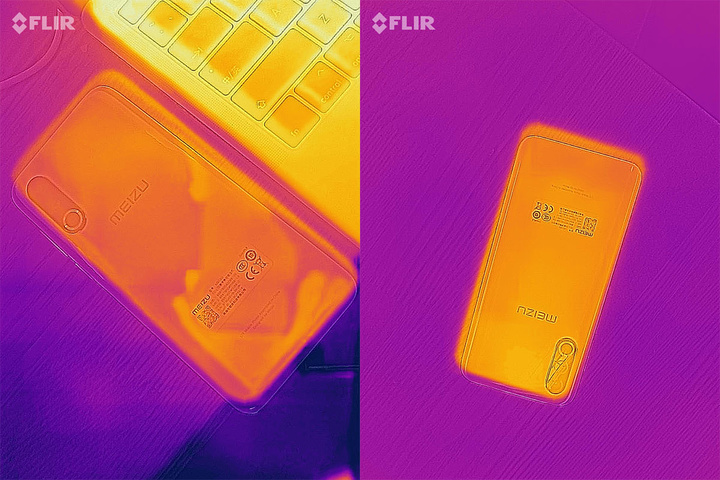
▲ The picture on the left is the state before the run, and the picture on the right is the state after completing the run.
The Meizu 16s Pro was placed in an ordinary office environment. After completing the test of the entire rabbit, the body temperature was about 38 °C, which was 2 °C higher than the running score. If you run two consecutive points, the Meizu 16s Pro will increase by about 6 °C.
At this time, pick up the phone and the edge of the back of the machine is still a little hot. However, running points is a link in the performance of the machine, and it is normal to have obvious heat. From the results of the thermal imaging pictures, the performance of the Meizu 16s Pro is actually acceptable.

To test the dayFrequently experienced changes in fever, we also played a few high-efficiency “Peace Elite” with Meizu 16s Pro. At this time, the temperature change of Meizu 16s Pro is not large, and the machine can ensure the smoothness of the game and meet the user’s demand for heavy game experience.
In addition, the Meizu 16s Pro generation is equipped with the mEngine 3.0 touch engine. Meizu said that this new touch engine can be compatible with most of the shooting games on the market, and can perform different vibration restorations for different scenes. At the same time, mEngine 3.0 supports 4D game simulation shock, and the touch sensitivity of mobile phones is also increased by 30% and 65%.

So in the process of experiencing “Peace Elite”, the touch feedback of Meizu 16s Pro is not bad, and the feel is crisper than other mobile phones. Even in high-quality mode, the touch can still be completely followed, and the touch experience basically does not need to worry.
Also, Meizu has also optimized on the mobile phone. The new game mode can reduce the interruption of other applications, and it will not reduce the performance loss, and improve the concentration of the mobile phone when running the game.
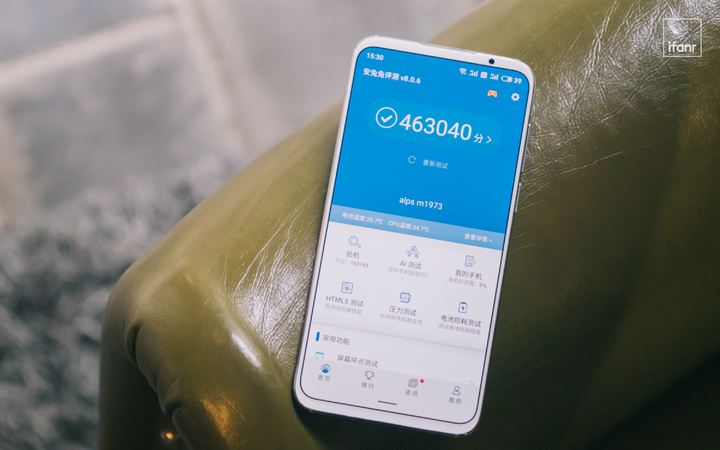
Like the Meizu 16s, the Meizu 16s Pro has a flagship performance.
Qualcomm’s latest Snapdragon 855 PLUS platform with LPDDR4X memory and the latest Hexagon 690 DSP AIE artificial intelligence chip, these configurations can guarantee the performance requirements of Meizu 16s Pro. Whether it’s games or daily use, or some features related to AI, Meizu 16s Pro can guarantee smooth and stable operation.
All in all, performance is currently the most worrying part of the Meizu flagship. Meizu 16s can give you such confidence, Meizu 16s Pro is the same.
48 million pixels mainstream three photos
The biggest upgrade of Meizu on the camera this time is to change the rear dual camera to three.

Although the main photo of Meizu 16s Pro is familiar with Sony’s 48-megapixel IMX586 CMOS, Meizu has added a dual-camera structure consisting of a 20-megapixel IMX350 and a 16-megapixel IMX481 as a secondary camera. The service features “2.5cm macro, 117° super wide angle, 3x lossless zoom” and super wide-angle shooting.
The Meizu 16s Pro uses a main camera with good results in a well-lit environment.


The whole picture is relatively clean, and the sky in the proofs also has a light and dark transition. Thanks to the high pixel advantage of the 48 megapixel sensor, the Meizu 16s Pro’s proofs also have good resolution. Enlarging the buildings in the picture on the mobile phone, the details of the windows between the floors can be restored, the sharpness of the proofs is enough, and the texture of the details is OK.
Just, the leaves near the center of the picture are still blurry, and the details are slightly worse.
However, the Meizu 16s Pro has excellent image resolution and detail reduction in most cases.


Like this set of proofs, the grass and wood boards of the Meizu 16s Pro, the details in the dry grass and the wood grain on the board can be clearly presented on the way. Moreover, the image also has a moderate sharpening process, which can further enhance the detailed performance of the image.
Meizu 16s Pro’s close-up still life shots also have a good performance.

Meizu added the “2.5cm Macro” function to this generation of cameras, which also brought the closest focusing distance closer, making it easier to focus on still life when shooting still life. After the shooting distance is shortened, the Meizu 16s Pro can achieve natural blurring with a large aperture lens.
In addition to close-up shooting, the user can zoom in with a zoom of three times, so that the shooting distance can be taken at the same time, and the details of the still life can be clearly restored..



Super wide-angle imaging is also good, and the camera can control lens distortion. Users can use this “super wide-angle mode” to take a picture with a larger viewing angle, and also take advantage of the characteristics of super wide-angle imaging to take some special pictures.
In the well-lit state, the Meizu 16s Pro’s super wide presentation is also good. However, there are still some problems with the initial algorithm, and the position of the image edge will suddenly drop. Moreover, the details of that part will also show a heavy sense of smearing. However, we still have the beta firmware, Meizu should be updated to improve the effect after the official firmware is released.
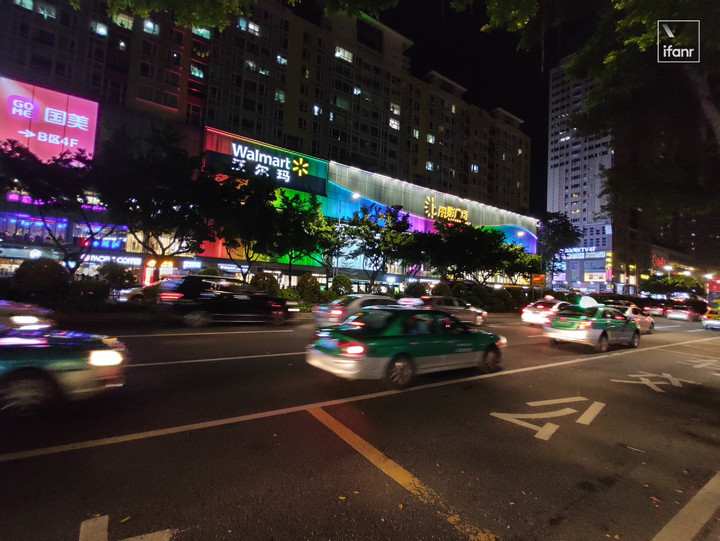
The nighttime imaging, Meizu 16s Pro also performed well. The photo is still clean overall, there is no obvious color noise in the night sky position, and the complex light environment of the street is well controlled.
Just, even in the state where HDR is on, the high-light position of the street light can’t be pressed down, and the over-exposure is quite obvious. The nighttime imaging of the Meizu 16s Pro has some decline in resolution, and it has not been highlighted in the daytime.

However, the Meizu 16s Pro also has a “Super Night Scene” mode. Improve the effect of a single photo by increasing the exposure time and multi-frame synthesis.
After the super night scene is opened, the billboards are overexposed, and more highlights can be preserved without reducing the overall brightness. The resolution and detail of the screen will also beIt is stronger than the nighttime photos taken in normal mode.

▲ Normal photo mode

▲ Open Super Night Scene
More importantly, the Meizu 16s Pro’s Super Night Scene mode has low stability requirements, and ordinary handhelds can also take photos successfully. Even in the bus with obvious jitter, the Super Night Scene mode is successfully photographed.
Having said that, but when you use Super Night Shot, you should try to avoid objects that move a lot in the painting, or it will affect the photo composition.

PhotographingOn the other hand, Meizu 16s Pro can still maintain the original shooting level. After changing from double to triple, it can bring more creative space to the mobile phone. This is also the advantage of the Meizu 16s Pro upgrade. It has absolutely no problem to meet daily life records.
However, Meizu’s investment in shooting mode is still a little less.
In addition to the super night scene and professional mode, the Meizu 16s Pro is not equipped with other special shooting functions. If Meizu can put more foolish “track shooting” modes into the mobile phone in the future, the gameplay of mobile phone shooting will become more abundant.
“3.5mm interface for independent sale”
Since Meizu 16s, Meizu also canceled the 3.5mm headphone port on the flagship phone.
As mentioned earlier, Meizu also launched a true wireless headset after canceling the 3.5mm headphone port, meeting the needs of ordinary users for wireless audio. But for a company with an acoustic background, only a true wireless headset is a bit worse.
In order to satisfy some of the users who have pursued the sound, Meizu also launched the Meizu Hi-Fi decoding amp. This product also has a good performance in terms of configuration and sound, but compatibility is still lacking. It can only be used on Meizu phones, and it doesn’t make much sense.

So, this time Meizu also updated this USB-C amp, and named it Meizu Hi-Fi decoding amp Pro, which enhances compatibility and further enhances the decoding capability of DSD lossless audio.

▲The lower left is the decoding amp Pro, the upper right is the old decoding amp
Compared with the previous generation, Meizu Hi-Fi Decode Amp Pro continues to use Cirrus Logic’s stand-alone DAC decoder CS43131, and also joins the Texas Instruments OPA 1622 headphone op amp chip.
The CS43131 supports up to 32bit/384kHz PCM decoded output and DSD high resolution audio format DSD64/DSD128 decoding. The OPA1622 second-stage op amp chip provides current drive capability up to +145mA/-130mA with a transient slew rate of 10V/μs to ensure thrust output.
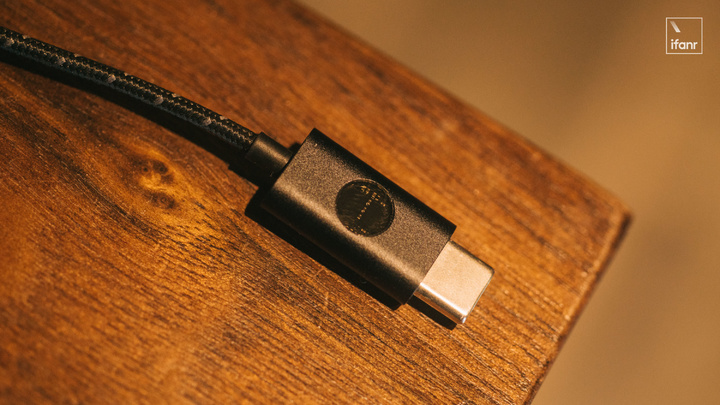
Like the Meizu Hi-Fi decoding amp, the Meizu Hi-Fi Decoder Amp Pro supports headphones up to 600Ω. This number is also the same as the current mainstream portable amp.
However, the Meizu Hi-Fi decoding amp Pro is small in size, and the surface of the wire is also made of nylon, which increases durability. Although the thrust is increased, the amp’s heat will be significantly more pronounced than the previous generation. But considering this compact design and size, it is also reasonable.
In addition, Meizu has also improved the compatibility of the amps this time.
Meizu Hi-Fi Decoder Amplifier Pro In addition to supporting Meizu phones, this time is compatible with other Android devices. Mac OS and Windows with USB-C interface can also use the new amp. For users who want to experience DSD hard solutions on other devices, this is also a non-negligible update point.
 < /p>
< /p>
Listen, we use Billie Jean and Meizu Live from Astell&Kern X JH Audio with Meizu Hi-Fi Decoder Amp Pro to connect Meizu 16s Pro experience:
